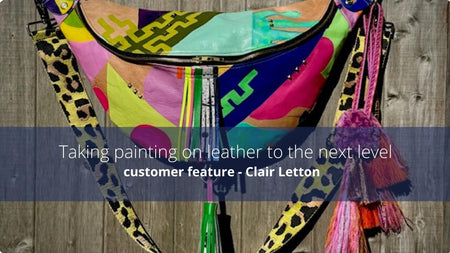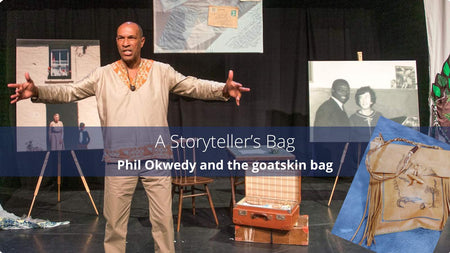They can also add attractive detail and come in different styles and finishes.
What you will need to set rivets:
A smooth stone or marble block or hard anvil of some sort
A solid non-wobbly surface to work on
A good mallet - wooden, poly head or rawhide (not metal)
The right setter - rivets are different and it is essential to the fix to use the correct tool.
Hole Punch - the punch size is usually listed on the size chart - the post should sit tight in the hole.
Standard Rivets

These come in two types - single cap (rapid) or double cap.
So what is the difference? Single cap rivets have a flat base to the post with an inverted hollow stem. In some Steampunk patterns (such as those on DieselPunk) they are used upside down.
In both instances the caps click on keeping them in place prior to setting.
The double cap would be used with the small dot anvil to prevent the cap from being flattened, the single cap can be set placing the back of the rivet flat on the stone slab.
To set you want around 2mm poking up from the leather layers. Any longer and the cap will slide as you hit, any shorted and there will not be enough metal in the cap/post to fix together.
Refer to the size chart to work out which rivet size you need.
Tip: Stick down the dot anvil to the block with soft tack or double sided tape to stop it sliding away.
Tubular Rivets

These rivets are set by pushing the post to split and round down.
They have a flat (un-domed) head so can be placed face down straight on the slab.
To set you want around 2-4mm poking up from the leather layers. Too long and the post will not round itself down. The setter is has a sort of star shape to the end with a centre spike. Position the spike into the centre of the post and hit down. The post splits and should roll downwards. To neaten off hit to flat.
They can be snipped to remove excess length before setting if needed, making them a flexible choice for different leather thicknesses.
Traditional Rivets

These rivets come in two parts - a solid post and and circular washer known as a burr.
They have a flat (un-domed) head so can be placed face down straight on the slab. They are usually made of softer metal such as copper or brass to enable the post end to be smashed over and rounded.
With these rivets the length of the post is immaterial as any excess is trimmed away. Push the burr down onto the top part of the rivet as far as it will go - about 1-2mm. Place the hole part of the setter on the top and hit firmly to drive the burr down until it meets the leather. Use the leather rivet pliers to snip away the excess rivet post positioning them as close to the leather as possible.
Place the rounded concave part of the setter over the snipped top of the rivet and hit down with a heavy mallet or in this case a metal hammer can be used.
Tips for Setting
Stand up straight - drive the hit with your body centred
Choose an area of your workbench with little or no wobble









This article is fantastic very easy to read and understand. Well done
Great blog post! I really enjoyed reading it. The content was informative and well-written. The topic you discussed is relevant and interesting. I appreciate the effort you put into creating this valuable piece of content. Keep up the good work! Here’s another blog written on How to Remove Rivets you may read it for further information. Thanks